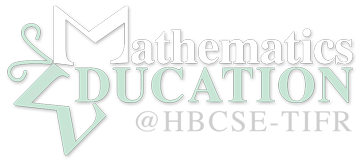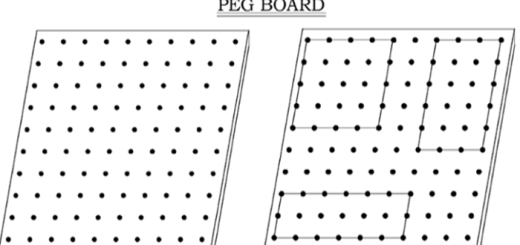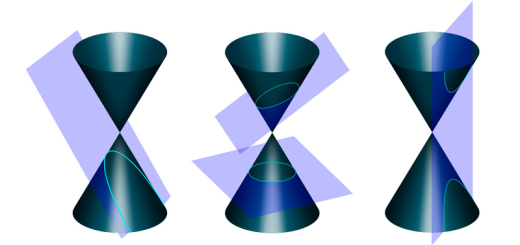Special Geometric Curves
Material Required: Ruler, Carrom striker, pen, mild steel wires for double helix.
Many types of interesting geometric curves occur in nature. It is possible to draw these curves using simple tools. We have included here techniques for drawing a few of these curves.
Cycloid
To draw this curve, place a ruler on a sheet of paper and fix with cello tape. Draw the edge of the ruler on the paper. On a carom striker mark a point on the circumference with a pen. Place the striker against the ruler on the paper, so that the point marked touches the ruler. Now without sliding the striker, carefully roll it on the edge of the scale till it moves forward by 2 cm. Now mark the point on the paper just below the point marked on the striker. Roll the striker forward again carefully by another 2 cm. Again mark the point on the paper under the point marked on the striker. Repeat this till the striker completes a full cycle and again touches the ruler. Remove the ruler and striker and join all the points marked on the paper by a smooth curve. This curve is a cycloid.
Celtic Spiral
Celtic spirals were drawn by an ancient people called the Celts who migrated across Europe to decorate their art. To draw a Celtic spiral, draw a circle with a radius of 8 cm. With a light pencil draw a diameter of the circle. Mark off 1 cm parts on the diameter, so that there are 16 parts on it. Now with the free hand try and draw the pattern of spirals shown in the figure. Note that both the spirals are clockwise. One starts from below the diameter and another from above the diameter.
Double Helix
A helix is a three dimensional spiral that looks like the thread on a screw. It is actually a line going at a constant angle around a cylinder or a cone. A common spring 25 is a simple example of a helix. A double helix has two similar helices wound round each other. This structure is one of the most important structures in the real world, for it is the structure of the DNA molecule.
To make a helix, take a tube of cardboard or metal, or a cylinder which is easily available. Take a rectangular piece of paper which exactly rolls on the cylinder. On the rectangular paper, start from one corner (say point A) and draw a line at any angle such that it cuts two longer sides of the rectangle (the sides corresponding to the height of the cylinder) at points A and B. Now mark a point C exactly opposite to point B on the same side as point A. Draw another line parallel to the first line. Continue this process till the lines go out of the rectangle.
Now roll the paper on the cylinder so that the lines are visible. The lines form a helix on the cylinder. Roll a piece of wire made of mild steel (which is commonly available in hardware shops) on the line and press it down so that it takes the shape of a helix.
To make a double helix make two identical helices with wire. These can be mounted on a wooden board to represent a DNA molecule. Small balls made of modelling clay can be placed on the two helices to represent the DNA bases.



